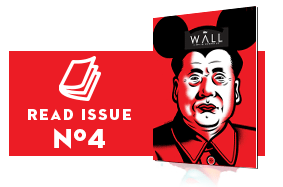Joshua Budich presents “Otaku Obscura”, a huge tribute to some of the greatest Japanese animated films of all time. And if we list you the six more notable titles, sure that you’re agree: Akira, My Neighbor Totoro, Neon Genesis Evangelion, Ghost in the Shell, Princess Mononoke, and Cowboy Bebop.
The exhibition is composed by character portraits, reimagined locales, and works about his favorite scenes. Budich adds his personal touch and interpretation to his favorites animes. In an interview with Spoke Art he states “The hyper-stylized, frenetic animation was like a bolt of inspirational lightning to a young artist. Once I got a taste, my eyes were open to whole new world of characters and themes. No longer was I tethered to a bland, pseudo-realistic, Disney-esque approach to the drawing. Anime has had a huge influence in my work” (read the entire interview here).
Most of these animes deals with very thoughtful (and usually darks) themes, such as the sensitivity of human nature, the future and its post-apocalyptic vision, or the sense of our existence. Don’t you remember the memorable final of Evangelion and the doubts of Shinji Ikari about himself asking simply: “Who am I?”.
Budich re-imagine these multifaceted worlds in a variety of classic poster styles, with an emphasis on the detailed symbology of each source. “Otaku Obscura” will be on view through October 24th.
Spoke Art Gallery – 816 Shutter Street – San Francisco, CA 94109







